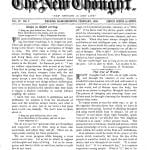British biologist Robert G. Edwards won the 2010 Nobel Prize for Medicine for developing the technique of in vitro fertilization. Beginning in 1978, some 4 million children were born who were conceived outside the womb.
Robert G. Edwards’s breakthrough development of in vitro fertilization, which led to the birth of the first “test-tube baby,” Louise Brown, in 1978, gave humanity the power to do what previously was considered the province of God: create and manipulate human life.
In the ensuing decades, the pioneering techniques that won the British biologist a Nobel Prize on Monday have played a part in controversial scientific advances such as cloning and the creation of human embryonic stem cells while redefining fundamental social roles such as what it means to be a parent or a family.
“The impact on society has been profound,” said Lori B. Andrews of the Chicago-Kent College of Law, who studies reproductive technologies. “The creation of a child outside the body for the first time has had scientific and personal implications far, far beyond the 4 million children who have been born through in vitro fertilization.”












